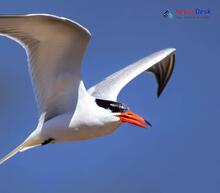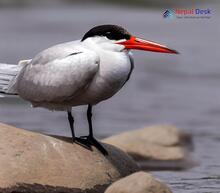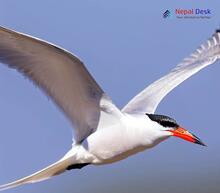Nepal, renowned for its breathtaking mountains and incredible biodiversity, offers a unique opportunity for birdwatchers and nature enthusiasts alike. Among its rich avian fauna, the bird genus Hydroprogne presents an often-overlooked species that showcases the fascinating diversity found within this picturesque country. Here, we explore the captivating beauty and natural habitats of the Hydroprogne genus in Nepal.
Unveiling the Hydroprogne Bird Genus
The Hydroprogne genus belongs to the family Laridae, which encompasses gulls, terns, and skimmers. These birds are characterized by their sleek bodies, long wings, and elegant flight patterns. While details about the widespread distribution of Hydroprogne species remain somewhat enigmatic, it is known that they consist of various species adapted to distinct environments.
Hydroprogne Species in Nepal
The most prominent member of the Hydroprogne genus found in Nepal is the Caspian Tern (Hydroprogne caspia), a large tern distinguished by its black cap and white plumage. This magnificent bird can be spotted around wetlands and water bodies across Nepal.
Habitats and Migration Patterns
The birds belonging to the Hydroprogne genus are predominantly aquatic, thriving in environments such as lakes, rivers, wetlands, and coastal areas. They are skilled at catching fish with their sharp beaks while gracefully soaring above water. During their migration periods, these birds embark on impressive journeys to reach more suitable habitats as the seasons change.
Birdwatching Tips for Spotting Hydroprogne in Nepal
If you're hoping to catch a glimpse of these splendid birds during your visit to Nepal, here are some tips to maximize your chances:
Visit during the right season
The Caspian Tern can be seen in Nepal primarily between October and May. Plan your trip accordingly to enhance your likelihood of spotting this avian marvel.
Choose appropriate locations
Target wetland areas, riverbanks, and other water bodies known for Hydroprogne sightings. The Chitwan National Park and Koshi Tappu Wildlife Reserve are excellent examples of locations with promising birdwatching potential.
Bring the right equipment
Equip yourself with quality binoculars, a camera with a good zoom lens, and field guides to assist in identifying the various species you encounter.
Connect with local experts
Local birdwatching groups, guided tours, and experienced birders possess invaluable knowledge about bird distributions, habitats, and behaviors in the region. Their input can greatly improve your chances of observing these magnificent creatures in their natural habitat.
In Conclusion
Whether you're an avid birder or simply someone looking to appreciate the incredible biodiversity that Nepal has to offer, the Hydroprogne genus presents a captivating opportunity to learn about a lesser-known yet fascinating avian group. Through mindful exploration and diligent observation, you just might find yourself rewarded with a rare sight of these elegant birds gracing the sky above Nepal's stunning landscapes.




